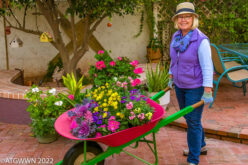“To many people, a cactus is the tall, spiny plant that they have seen in films of the Wild West.” (Miles Anderson, Cactus & Succulent Guide)
Well I live in the Wild West and when traveling about exploring gardens I must admit to feeling a little smug living among beautiful cactus, euphorbias, agaves and succulents. In the wild native landscape of the southwest, organ pipe cactus reach for the sky, saguaros march down hillsides into the valley and agave americana’s send up giant stalks of bloom. I know what great effect cactus and succulents can make in our landscape and think “What could I learn looking at other cactus gardens?” Yet arid lands exist all over the world and the palate of plants thriving in these various regions appear in creative displays that rival any in the desert southwest.
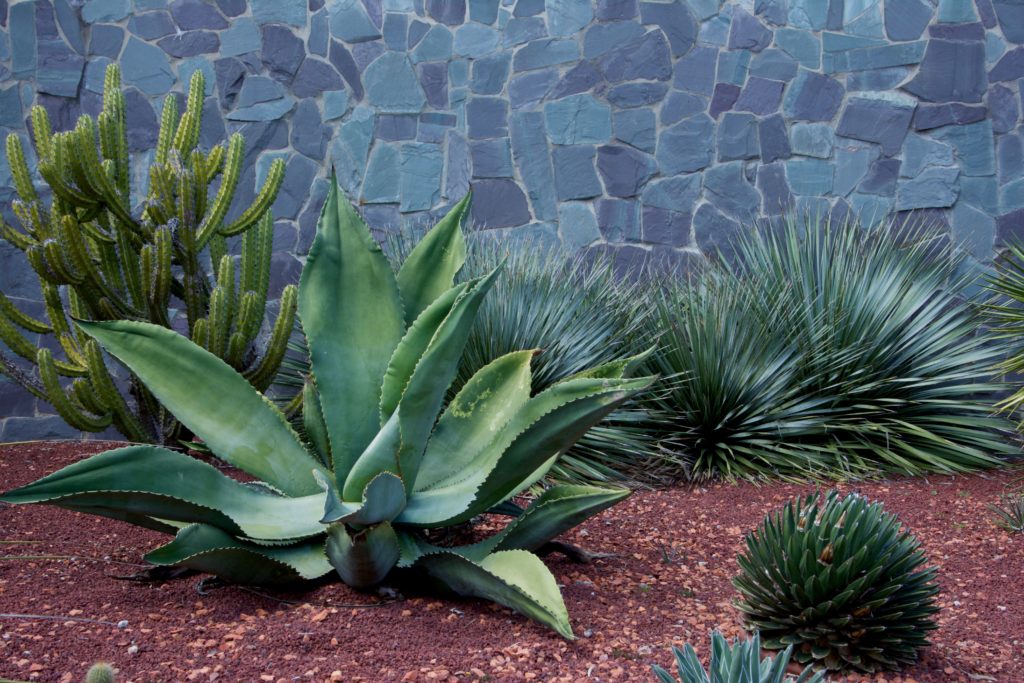
Sydney, Australia’s Royal Botanic Garden has a walled Succulent Garden right inside the Woolloomooloo Gate entrance. I assumed just a quick look would suffice and I was so wrong. The anchor of the garden is a tiered planting of euphorbia, cactus, echeveria, aloes and more. Steel panels served to separate the plant groupings and provide a background to emphasize the plants’ interesting shapes.
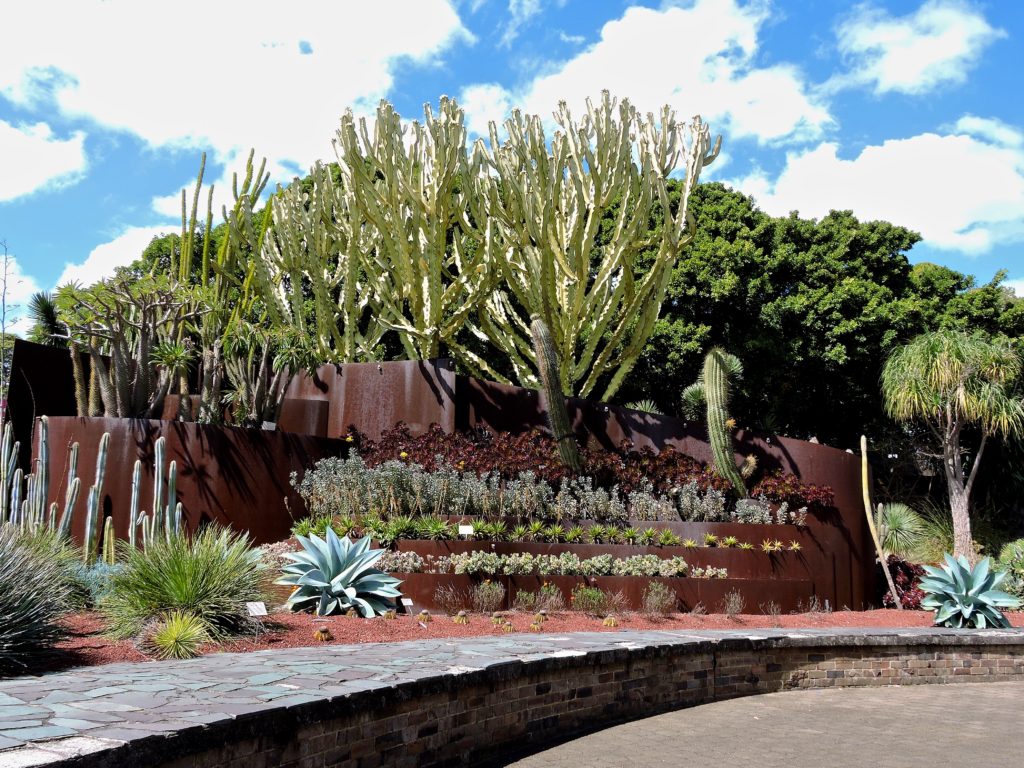
Some spires of the euphorbia reach 30’ into the air. Shades of green from chartreuse to purply black add to the pallet of color. Textures included the smooth leaf and the prickly spines of a wide range of plants. Designed as artfully as any artists’ composition on canvas, enhanced by time and sun, this display is a jaw dropping example of the beauty of these arid land plants.
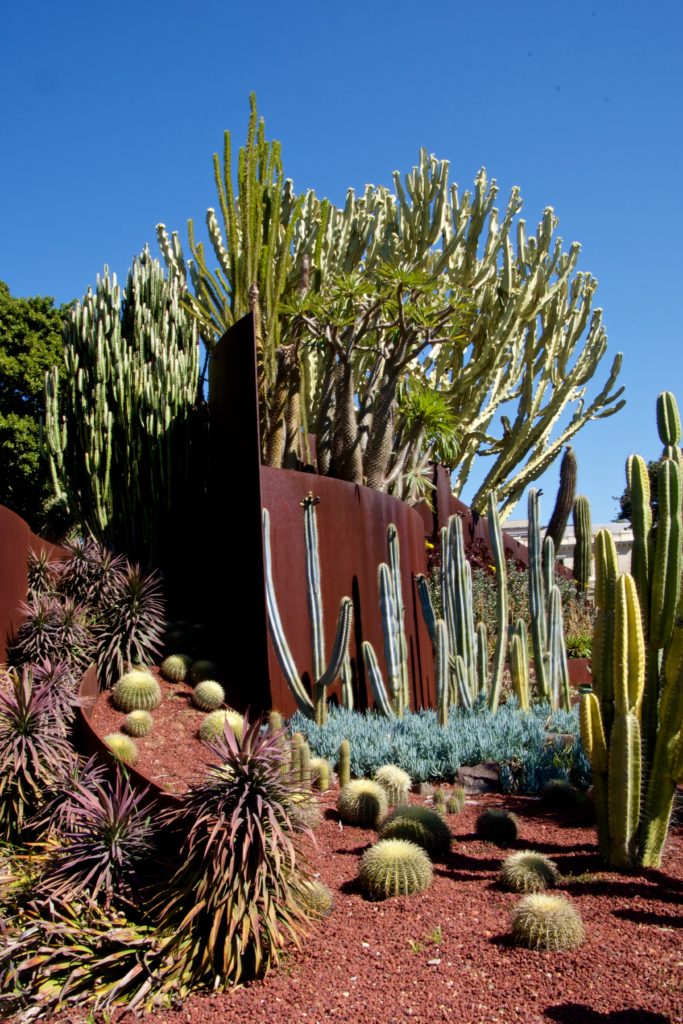
Around the garden are examples of cactus and succulents from other continents. But even here there is a display describing the significance of the agave plant and its contribution to liquid refreshment in “the American Wild West.”
In Melbourne’s Royal Botanic Garden, Guilfoyle’s Volcano is a cone shaped water reservoir holding storm water for a water management system in the garden. Realizing the impact of rising temperatures and unpredictable rainfall, the garden emphasizes low water plants for the home gardener. Unused for 60 years, the reservoir was reimagined in 2010 by designer Andrew Laidlaw who designed a volcanic eruption effect of lava flows using sedums, succulents, agaves and cactus. As visitors walk the circular path to the top, they pass waves of color created by low water use plants.
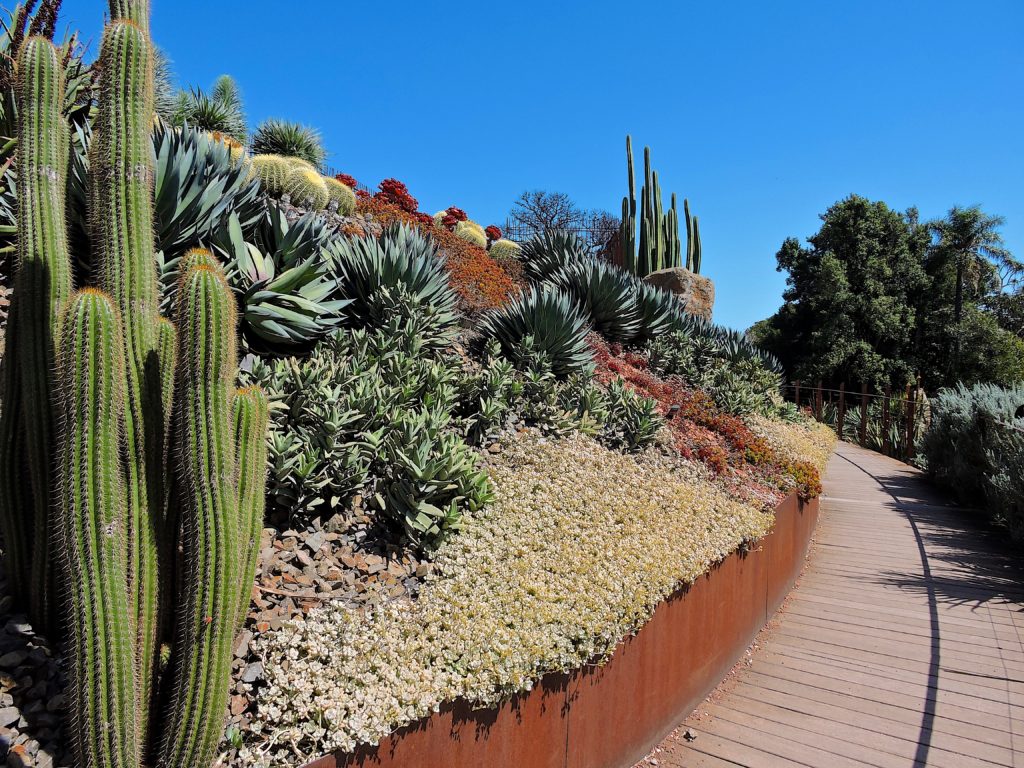
A circular path leads visitors to the highest point in the garden where they can lookout toward the city. When looking down, there are waves of color using low water use plants with interesting textures and proportion.
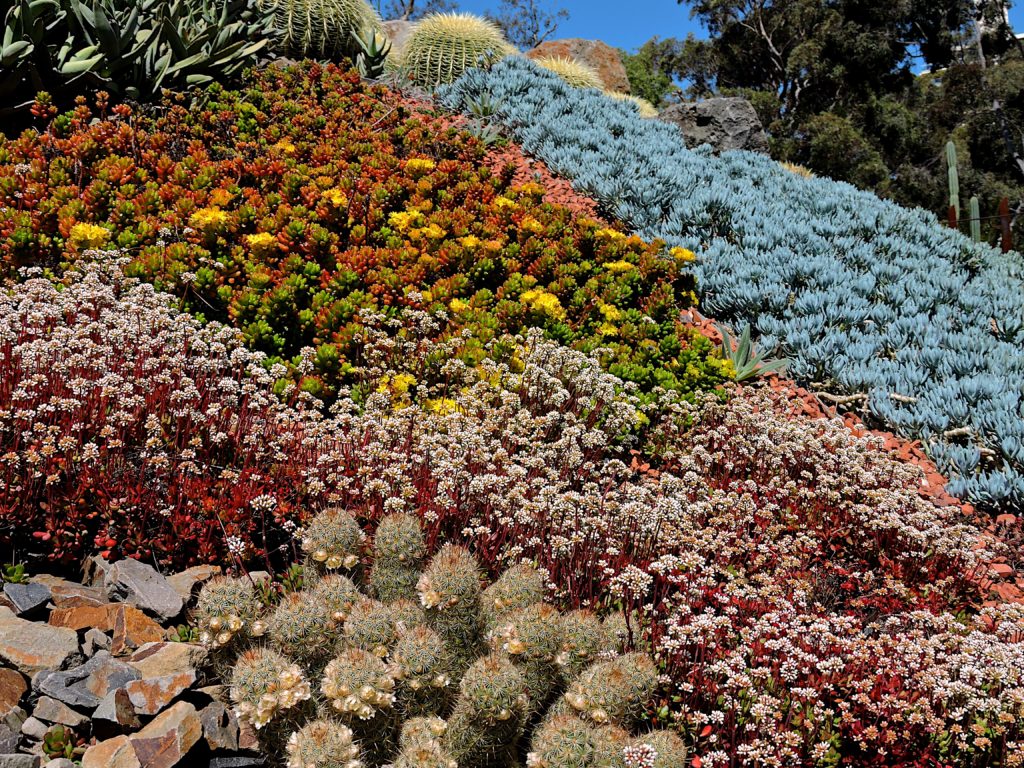
In Lanzarote, one of the Canary Islands of Spain, Cesar Manrique designed a spatial masterpiece cactus garden. An artist in a variety of mediums, he created his sunken garden to be viewed from all angles, especially from above. Such a view highlights the shape and colors of the unusual plants.
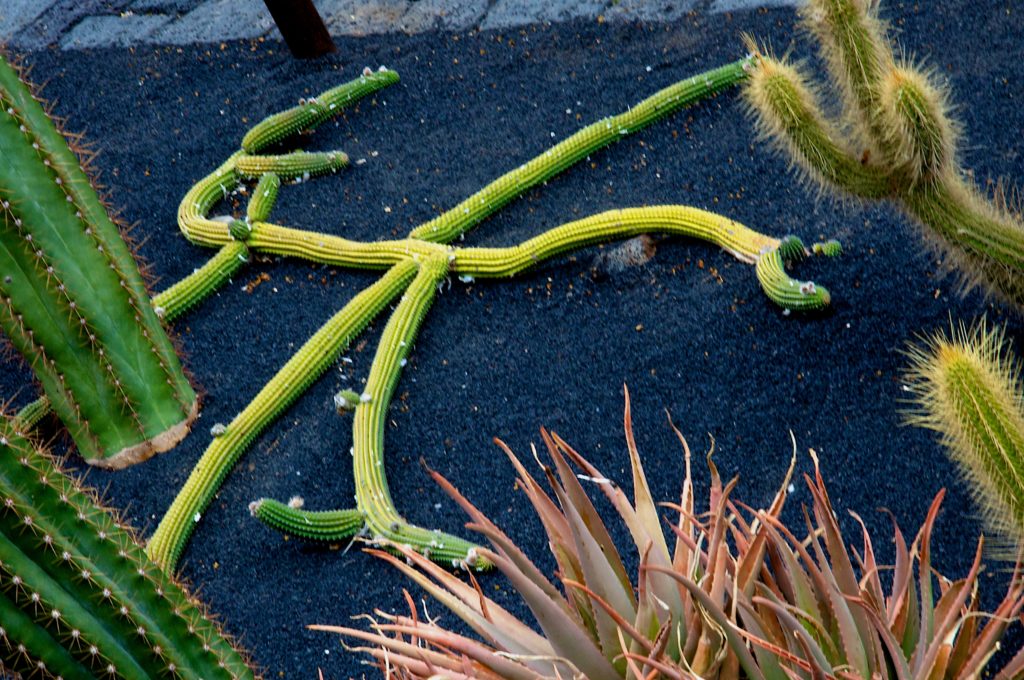
As gardeners around the world face rising temperatures and water restrictions a cactus and succulent landscape offers a magical option. Anderson writes in his Succulent Guide there are over 10,000 varieties of succulents and within that 2500 varieties of cactus. (All cacti are succulents but not all succulents are cacti. Anderson) There are variations in color, textures, size and shapes. What is so important is to have an inspired design! 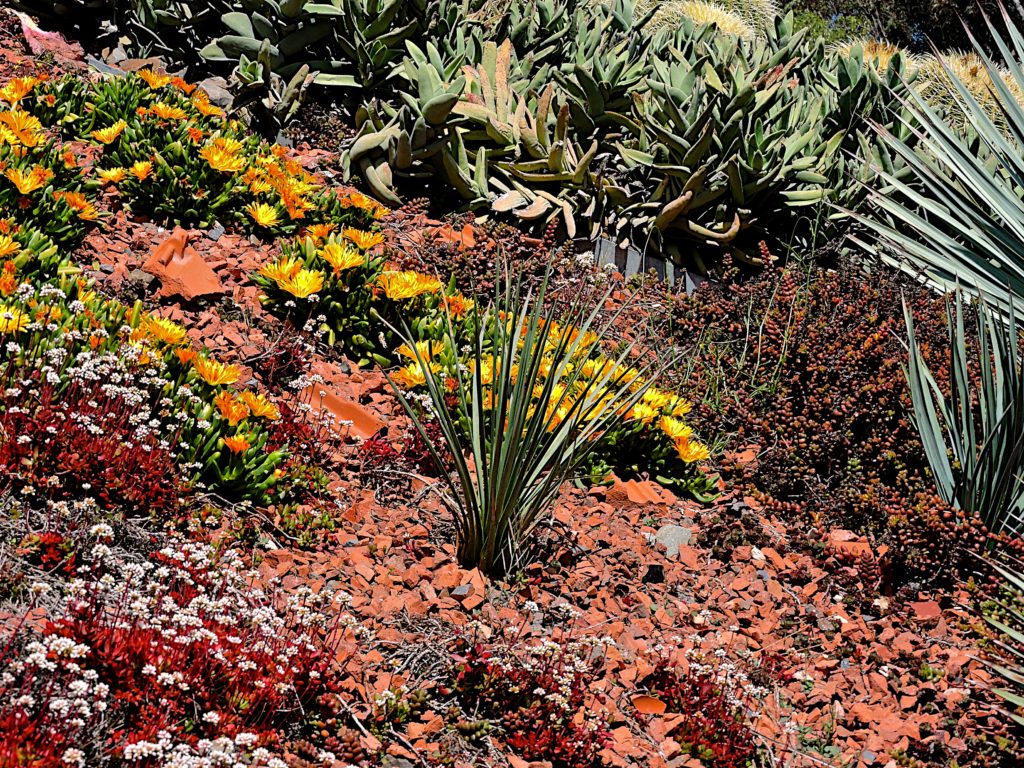
Visiting gardens expands our view of what is possible. I have always believed to have a great idea you need a lot of ideas. Cactus and succulents are often displayed in specimen gardens with collections of similar shapes grouped together and labeled. This is certainly helpful for it is a scientific art to accurately identify each type. However, uninspired design plops a cactus or succulent along a street or in a corner of a garden with little attention to the overall effect
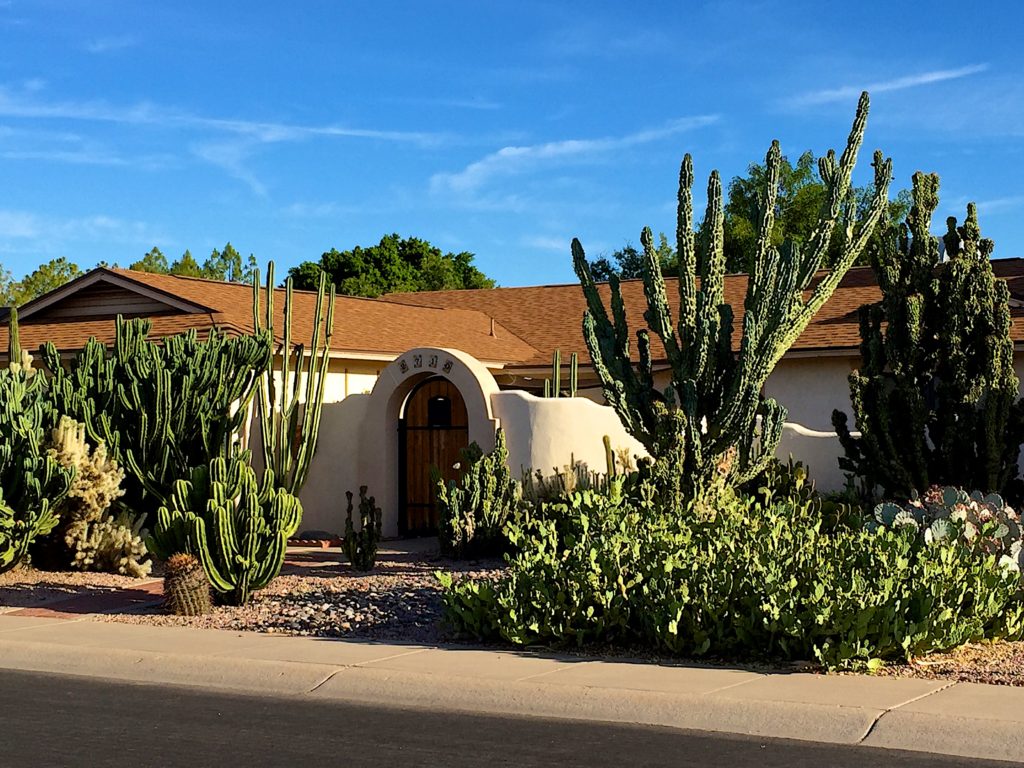
Mesa, AZ
Few home garden cactus displays are created with a grand planting scheme of mature plants. Yet seeing creative arrangements prove the results are worth the wait. Home gardeners generally purchase small specimens or receive starts shared by a fellow gardener. Cactus and succulents especially require patience and planning.
A garden designer works with a defined space, soil and climate elements to create a space to enjoy. In my neighborhood there are grand cactus landscapes, many with decades of growth, the result of an inspired design. Less than three years ago a neighbor planted smooth pad opuntia along the street side of his house and already they make a dramatic statement mixed with a red bird of paradise and agave americana.
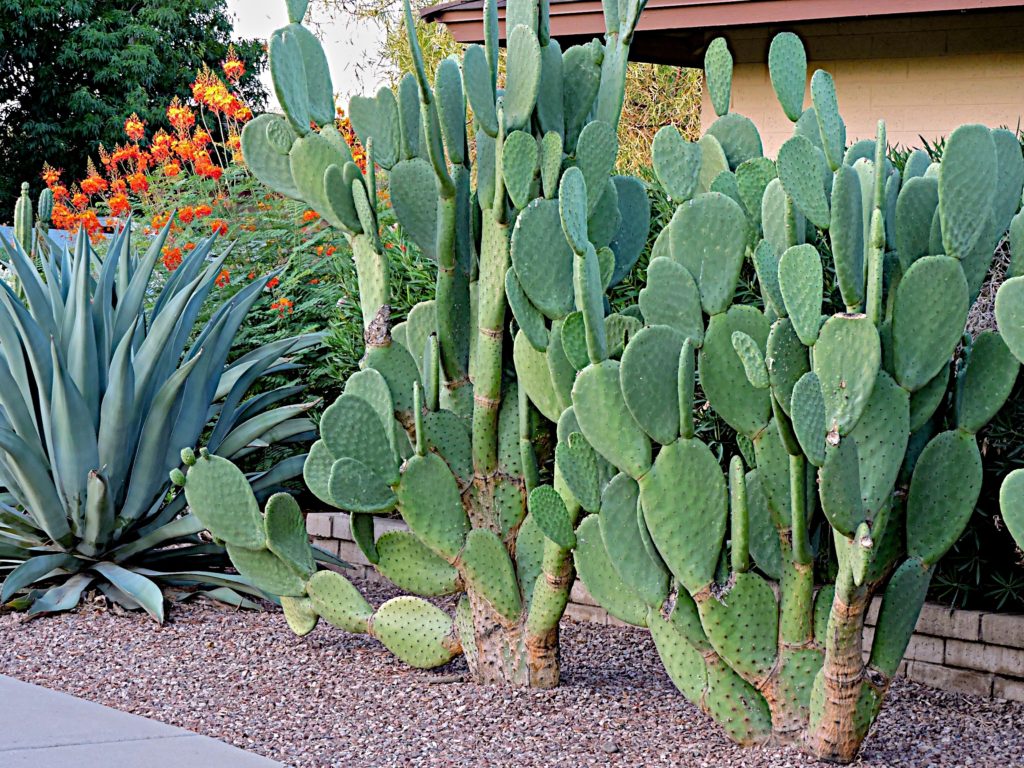
The Sigs Dunlap Cactus Garden at Lotusland, in Santa Barbara, CA was designed especially for a collection of mature plants. Sigs Dunlap grew cactus from seeds for 70 years. He was curious, tenacious and fascinated by the results. As he neared the end of his gardening days his 300 plus mature specimens of mainly columnar cactus were moved to an artfully designed space in Lotusland. Rarely does a cactus garden become an immediate creation of exceptional arid land plants. Yet seeing such a space is truly inspiring.
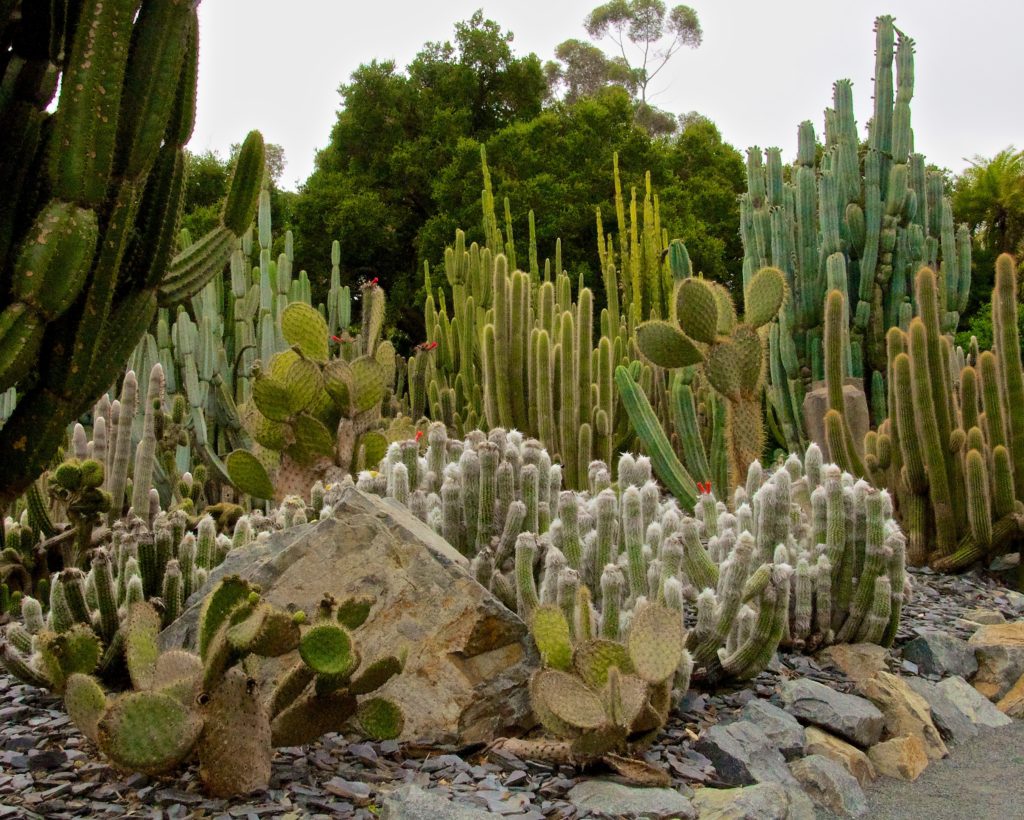
Sigs was 93 years of age when the garden opened and in the photos he is smiling broadly. Perhaps the joy of watching his plants grow added years to his gardening days. Maybe we can reimagine our gardens as a creative composition of succulents and cactus, use less water and extend our joyful gardening days.
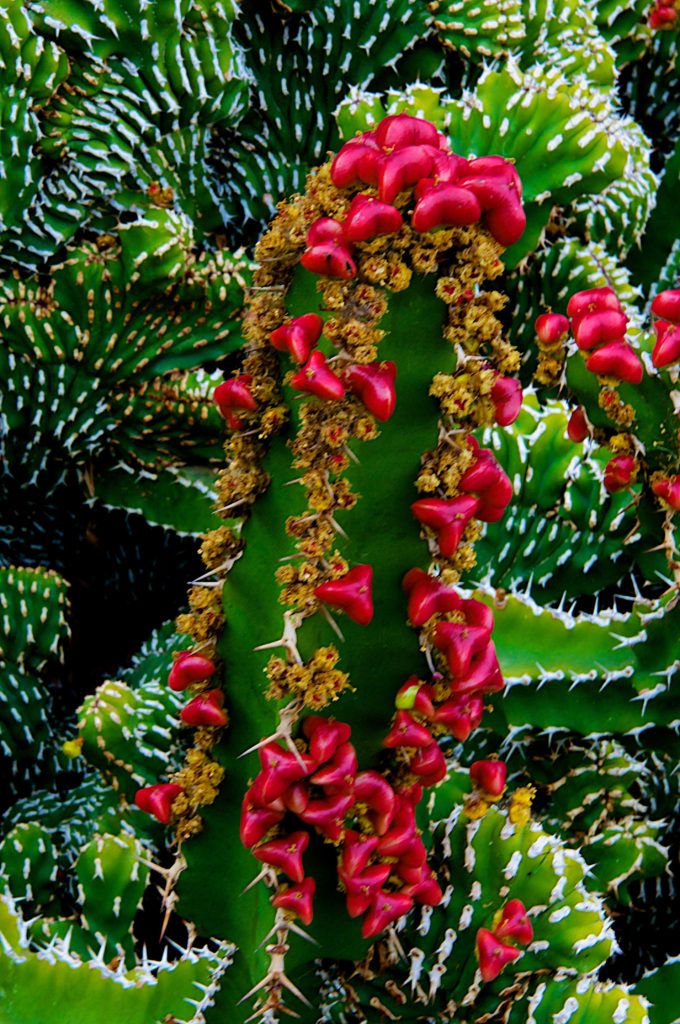
A great resource: The Complete Illustrated Guide to Growing Cacti & Succulents, Miles Anderson,
Lorenz Books 2008
